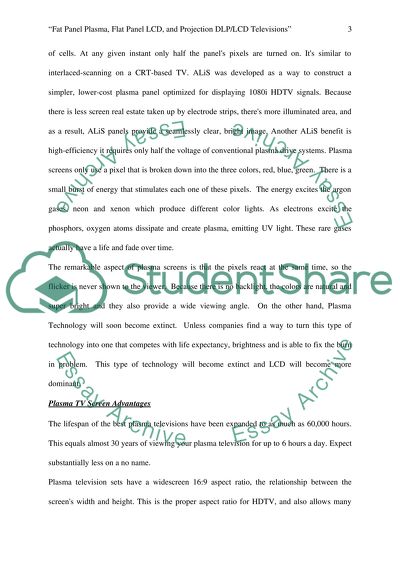Fat Panel Plasma, Flat Panel LCD, and Projection DLP/LCD Televisions Essay. Retrieved from https://studentshare.org/miscellaneous/1508291-fat-panel-plasma-flat-panel-lcd-and-projection-dlplcd-televisions
Fat Panel Plasma, Flat Panel LCD, and Projection DLP/LCD Televisions Essay. https://studentshare.org/miscellaneous/1508291-fat-panel-plasma-flat-panel-lcd-and-projection-dlplcd-televisions.


